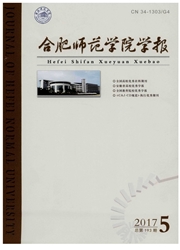

 中文摘要:
中文摘要:
艺术(审美活动)与人生(生命活动)的关系是20世纪中国美学关注的一个重要问题,诸多美学家都涉及或探讨过这一问题,朱光潜更是以“人生艺术化”学说及其相关论点予以回应和阐发,从而开辟了中国现代美学的人生论传统。“人生艺术化”是朱光潜综合中西文化和审美思维后的理论再创造,并成为其人本主义美学思想的逻辑起点。通过这一命题,朱光潜美学毫不吝啬地宣扬人性的高贵,肯定审美经验的共同人性基础,并追求超越人生的崇高境界。其“人生艺术化”理论即是以知-情-意的人生统一体为出发点,最终指向真-善-美的价值同构(幸福)。因此,向康德式的实践理性(道德理性)与共同人性的无限逼近,是朱光潜美学思想的最高旨趣和先验之维。
 英文摘要:
英文摘要:
Relation between art(aesthetic activity)and life(life activity)is an important issue addressed by Chinese aesthetics in the 20 th century,which has been covered by most aestheticists.ZHU Guang-qian initiated the tradition of theory of life in China's modern aesthetics through his response and elucidation with his theory of artistic life and some related views.Artistic life is the recreation ZHU made by synthesizing Chinese and Western culture and post-aesthetic thought theory,becoming the logical starting point for his humanistic aesthetics.With this proposition,ZHU Guang-qian advertised with great generosity the nobleness of the human,affirmed the common human foundation of aesthetic experience,and pursued the majestic heights beyond human life.His artistic life theory eventually leads to the value identity of truthgoodness-beauty with the starting point of life unity of knowing-love-meaning.Therefore,Kant's practical reason(moral reason)and infinite approximation of common human nature is the highest interest and transcendental dimension of ZHU'S aesthetic thought.
 同期刊论文项目
同期刊论文项目
 同项目期刊论文
同项目期刊论文
 期刊信息
期刊信息
